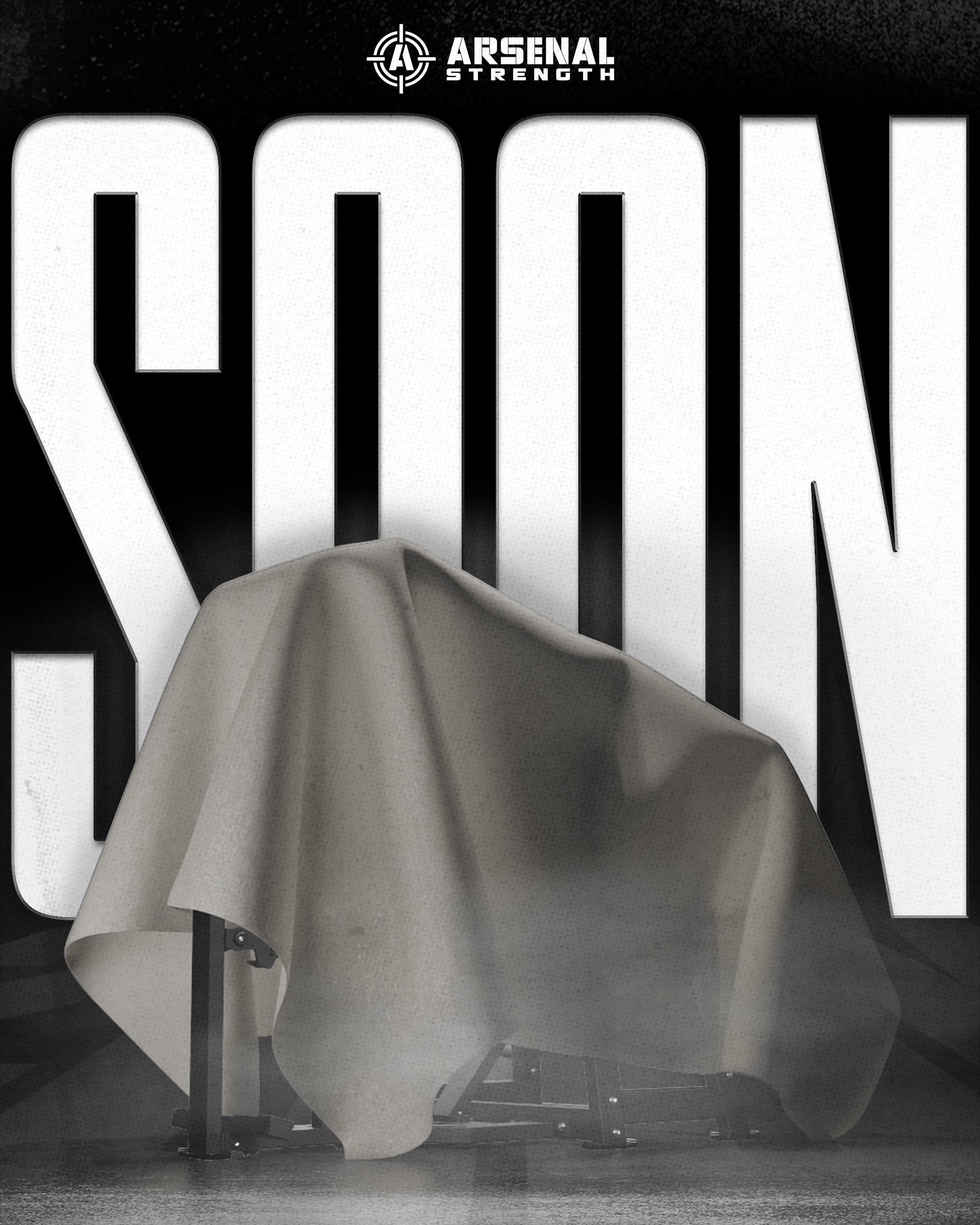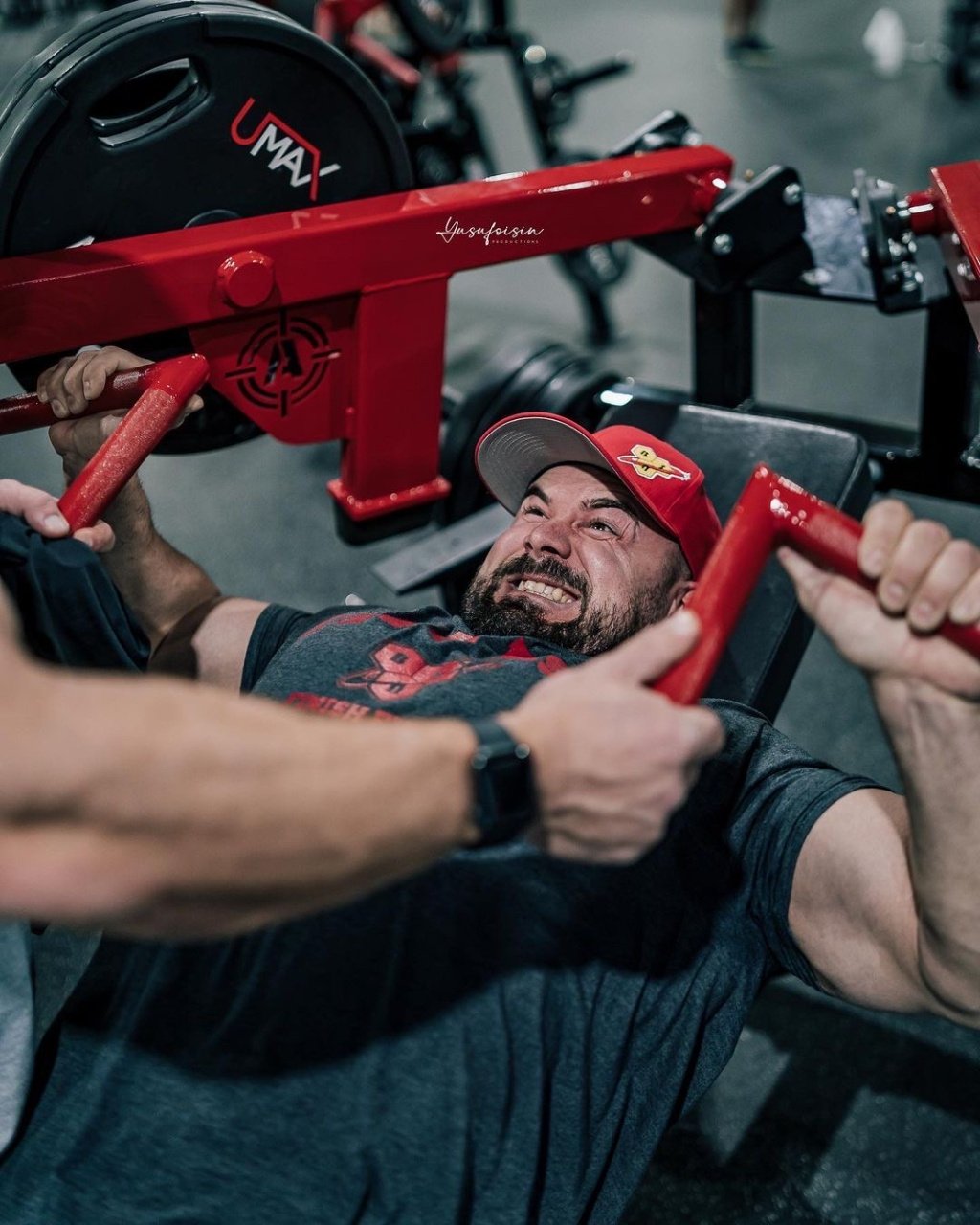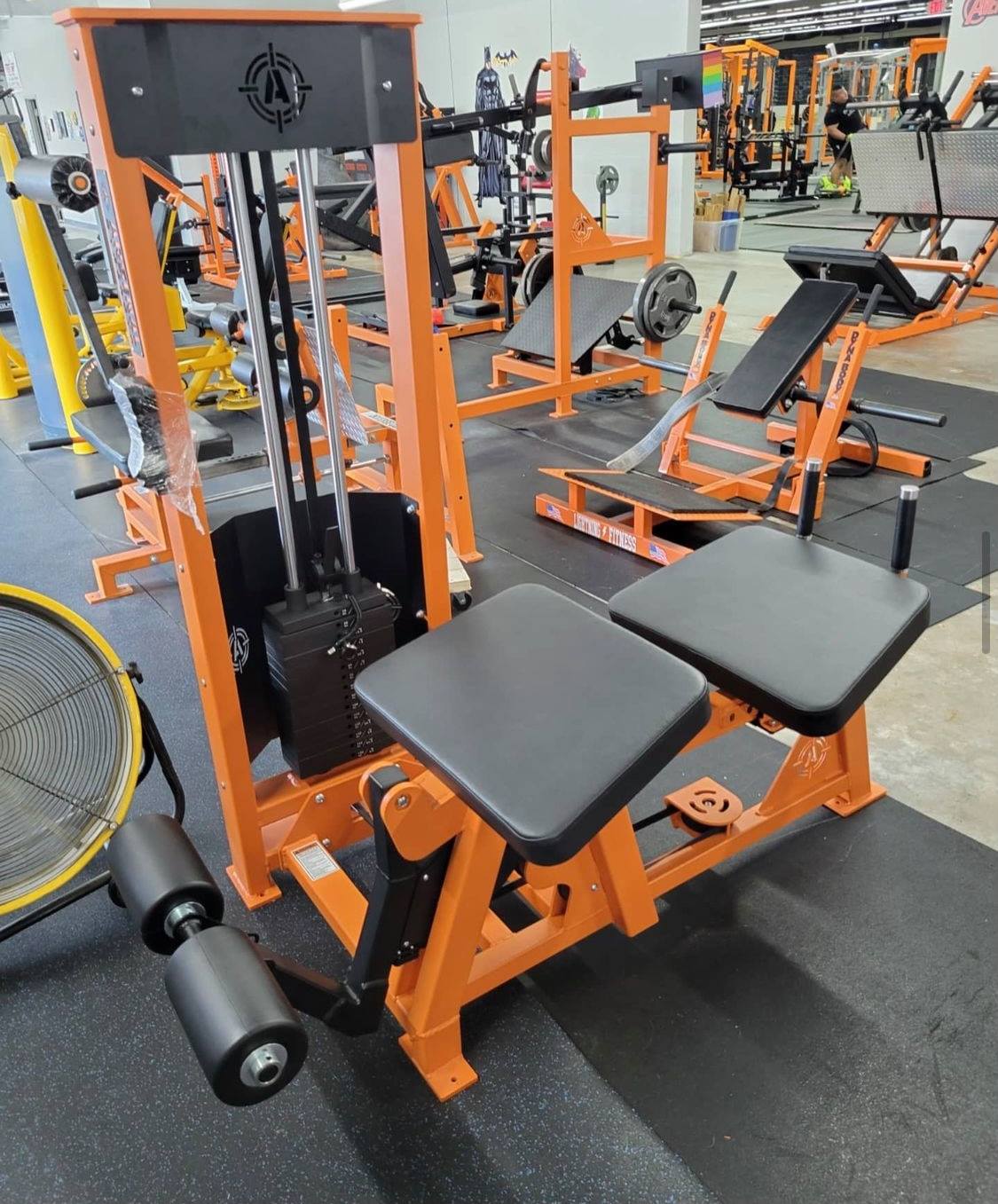Incline Press vs Chest Press
Which is Best for Building Muscle?
Incline press vs chest press: which one should you be doing? This article compares these exercises, explaining how they target different muscles and their benefits. By the end, you’ll know which is best for your muscle-building goals.
- The incline press targets the upper chest and shoulders more, making it ideal for upper body strength, while the chest press provides a balanced workout for the entire chest.
- The chest press machine is great for beginners due to its controlled movement and safety, while the incline press allows for heavier weights and focuses on upper chest hypertrophy.
- Incorporating both incline press and chest press in your routine ensures balanced muscle growth and overall strength, targeting different areas of the chest effectively.
Differences Between Incline Press and Chest Press
While both incline press and chest press are effective exercises, they serve unique needs and target different muscle groups. The primary distinction lies in muscle activation. The incline press places a greater emphasis on the anterior deltoids, making it a go-to for those looking to sculpt their upper chest and shoulders. On the other hand, the chest press activates the pectoral muscles more evenly, providing a balanced workout for the entire chest region.
Equipment used is another distinguishing factor between these two exercises. Incline presses typically require an adjustable bench set to an angle of 30-45 degrees, along with a barbell or dumbbells. In contrast, the chest press can be performed using a flat bench or a chest press machine, each offering unique benefits and limitations.
Muscle Activation
Incline press and chest press display markedly different muscle activation patterns. The incline bench press is particularly effective in targeting the upper pecs due to the bench’s angle. This position also means that the anterior deltoids engage more than they would in a flat bench press.
In contrast, the flat bench press is superior for overall pectoralis major development because it evenly stresses both the upper and lower pecs. This makes the flat bench press an excellent choice for those looking to build overall chest strength and size in their workout routine.
Equipment Used
The incline bench press targets the upper chest and anterior deltoids effectively, making bench press exercises essential for full chest development. Known as the incline press, this bench press exercise necessitates an adjustable bench inclined at 30-45 degrees, supplemented with a barbell or dumbbells.
On the other hand, a chest press can be executed either on a flat bench or with a chest press machine. Machines are particularly beneficial for beginners as they provide a controlled movement path and reduce the risk of injury.
Benefits of Incline Press
The incline press excels in carving the upper chest. By emphasizing the upper pectoral muscles, it contributes to a well-rounded and aesthetically pleasing chest. This exercise is particularly beneficial if your goal is to build a more balanced and well-rounded chest, as it isolates the upper chest muscles, allowing for heavier weight lifting and promoting muscle growth.
Furthermore, incline presses can substantially augment upper body strength, predominantly targeting the upper portion of the pectoral muscles. This makes it a valuable addition to any workout routine aimed at building muscle and strength.
Upper Chest Development
One prominent advantage of the incline bench press is its superior activation of the upper pectoral muscles compared to a flat bench press. This is due to the angle of the bench, which emphasizes the clavicular head of the pectoralis major.
For those aiming to maximize their upper chest activation, performing the incline bench press at a 30-degree angle is recommended, as higher angles like 45 or 60 degrees may not be as effective. This focused activation helps in achieving a well-rounded chest appearance, making it a crucial exercise for bodybuilders and fitness enthusiasts alike.
Shoulder Involvement
Beyond benefiting the upper chest, the incline press also substantially engages the anterior deltoids. This involvement of the shoulder joint can help increase shoulder strength and stability, which is beneficial for overall upper body functionality.
Moreover, by engaging the rotator cuff muscles, the incline press helps in improving shoulder stability and strength. This makes it an excellent exercise not just for chest development but also for enhancing shoulder health and performance, making it resemble a shoulder press to some extent.
Benefits of Chest Press
The chest press offers numerous advantages, making it a foundational exercise in many workout regimes. One of its primary advantages is safety and ease of use. The chest press machine promotes stability and reduces the risk of injury, making it particularly appealing to both beginners and experienced lifters. This machine provides a controlled movement path, allowing users to focus on proper form and muscle engagement.
Another significant benefit is muscle isolation. The chest press allows for focused muscle development by isolating the chest muscles, ensuring maximum activation of the pectoral muscles. This makes it an ideal exercise for those looking to enhance muscle growth and achieve targeted strength development.
Safety and Ease of Use
A notable feature of the chest press machine is its capacity to reduce the risk of injury. The stabilized movement paths and design of the machine help prevent injury by promoting proper alignment and reducing awkward movements. This makes it an excellent choice for beginners who are still mastering the correct form.
Additionally, the controlled and guided motion of the chest press machine provides a safe environment for lifting heavier weights, which is beneficial for both muscle growth and bone density enhancement. This makes it a preferred choice for those looking to lift heavier weights safely.
Muscle Isolation
The machine chest press excels at isolating the chest muscles, thereby providing an effective means for targeted muscle development. Unlike free weight exercises, the chest press machine provides controlled movements that prevent the use of momentum, ensuring the chest muscles are fully engaged throughout the exercise.
This isolation of the chest muscles allows for maximum activation of the pectoral muscles, which is beneficial for muscle growth and strength development. This makes the chest press an essential exercise for those looking to achieve balanced and targeted muscle development in their workout routine.
Comparing Muscle Activation in Incline Press vs Chest Press
In terms of muscle activation, the incline press and chest press induce unique impacts on the body. The incline press involves more shoulder flexion, increasing the activation of the upper chest at a 30 or 45-degree angle compared to the flat bench press. This makes it ideal for those looking to target their upper chest and shoulders more intensively.
In contrast, the chest press provides a balanced activation of the pectoral muscles, making it suitable for overall chest development. By incorporating both exercises into your workout routine, you can target all areas of the chest effectively.
Pectoral Muscles
The incline press achieves superior activation of the upper chest and shoulders relative to the flat bench press. This is because the incline bench presses put more emphasis on the clavicular head of the pectoralis major, making it a key exercise for upper chest development.
On the other hand, the flat bench press targets various parts of the pectoral major more evenly, providing a balanced workout for the entire chest. This makes it an excellent choice for overall chest strength and size development.
Stabilizer Muscles
Triceps brachii serve as a stabilizer muscle in both incline and flat bench presses. However, the incline press tends to engage the front deltoid more dominantly, especially if the bench angle is too high. This makes it a more challenging exercise for the stabilizer muscles.
The chest press, on the other hand, allows for isolated muscle engagement, focusing on the chest, triceps, and anterior deltoids. This makes it an effective exercise for targeted muscle development and stabilization.
When to Use Incline Press vs Chest Press
Including both incline press and chest press in your workout routine can contribute to a comprehensive program. Use the incline press when aiming to target the upper chest and shoulders more intensely. This exercise is particularly beneficial for those looking to build upper body strength and achieve a balanced physique.
The chest press, on the other hand, is suitable for those looking to lift heavier weights safely and is ideal for beginners or those in rehabilitation. By integrating both exercises into your workout routine, you can achieve balanced muscle development and enhance overall strength.
For Building Upper Body Strength
Due to its emphasis on the upper pecs and front deltoids, the incline press is an excellent choice for building upper body strength. This makes it an effective exercise for those looking to develop upper body muscles and achieve a well-rounded chest.
Additionally, the incline bench press puts less stress on the rotator cuff compared to the flat bench press, making it a safer option for those with shoulder concerns. This makes it a valuable addition to any workout routine aimed at building upper body strength and muscle mass.
For Beginners and Rehabilitation
Due to its simple and controlled movement, the chest press is advisable for beginners. The chest press machine’s design helps prevent injury by promoting proper alignment and reducing awkward movements.
In rehabilitation settings, the chest press helps in controlled muscle activation and recovery, making it an ideal exercise for those looking to regain strength safely. This makes it a valuable tool for both beginners and those in rehabilitation.
Proper Technique for Incline Press
Employing the correct technique is vital for capitalizing on the benefits of the incline press and averting injuries. Starting with a neutral spine and feet flat on the floor is essential. Grasp the barbell at about 1.5 times the width of your shoulders for balance.
Begin with an empty barbell to learn the correct technique before adding weights.
- Inhale as you lower the bar
- Exhale as you push the bar up
- Lower the barbell by bending your elbows
- Reverse the movement to lift it away from your chest.
Starting Position
To start the incline press, follow these steps:
- Lie flat on an inclined bench with your spine neutral.
- Keep your feet flat on the floor.
- Properly position your shoulders by pulling them back and down.
- This will help reduce the dominance of the anterior deltoids during the incline press.
To find the perfect grip width, lay down on the bench with arms straight and pull elbows back until they make a 90-degree angle. This ensures you have the right grip width for effective muscle activation and balance.
Execution
Grasp the barbell at about 1.5 times the width of your shoulders. Engage your shoulder blades back and down during the incline press to enhance upper chest activation and muscle growth. Lift the barbell off the rack and lower it by bending your elbows. Ensure your elbows are under the bar at all times for proper balance and avoid arching your back or thrusting your head forward during the lift.
To perform the exercise correctly:
- Inhale as you lower the bar
- Exhale as you push the bar up
- Avoid performing the exercise too rapidly to maximize its benefits
- Controlled movements allow for better muscle engagement and reduce the risk of injury
Proper Technique for Chest Press
To ensure effectiveness and safety, the chest press demands accurate technique. Start by aligning the handles with the middle of your chest before beginning the exercise. Maintain contact between your back and the padding throughout the movement to ensure stability and proper form.
Press the handles outwards without locking your elbows. Exhale as you press the handles away from your chest and inhale as you bring the handles back towards your chest, without letting them go farther than chest distance.
Adjusting the Machine
Adjust the seat to a height that aligns the handles with the middle of your chest. This ensures proper alignment and effective engagement of the chest muscles. Use the foot advance pedal to bring the handles to the start position, which helps in easily getting into the correct position before initiating the press.
Ensure your feet are flat on the floor to provide stability during the press. Maintain a neutral spine throughout the exercise to avoid putting undue stress on your lower back, helping to prevent injury and maintain overall body mechanics.
Execution
Start with a controlled motion, pressing the handles forward while keeping your elbows slightly bent. Avoid locking out your elbows at the end of the press to maintain tension on the chest muscles. After each set, lower the handles to the resting position.
Maintaining a controlled pace throughout the exercise ensures maximum muscle engagement and reduces the risk of injury. This technique helps in effectively targeting the chest muscles for optimal growth and strength development.
Variations and Alternatives
Enriching your workout routine with variations and alternatives to the incline press and chest press can aid in targeting different muscle groups and averting plateaus. Decline push-ups and resistance band incline chest presses are excellent alternatives that require minimal equipment and provide effective muscle activation.
Performing the incline press with a pair of dumbbells presents distinct benefits, like improved muscle activation and rectification of muscle imbalances. Incorporating different exercises into your routine can keep your workouts fresh and challenging.
Decline Bench Press
The decline bench press is particularly effective for targeting the lower portion of the chest compared to the incline and flat bench presses. This technique allows you to lift heavier weights and stimulate muscle growth in the lower chest.
Decline push-ups can also be a convenient alternative for targeting the lower chest, especially during home workouts or when traveling. Including the decline bench press in your routine can help achieve balanced chest development.
Dumbbell Bench Press
Dumbbell bench presses offer distinct advantages over the barbell bench press or machine presses. Using dumbbells can enhance muscle activation and address muscle imbalances. This variation allows for a greater range of motion and improves coordination and stability.
Incorporating dumbbell bench presses into your workout routine can help in achieving balanced muscle development and enhancing overall upper body strength. This exercise is particularly beneficial for those looking to address muscle imbalances and improve muscle activation.
In summary, both the incline press and chest press offer unique benefits that can contribute to a well-rounded workout routine. The incline press is ideal for targeting the upper chest and anterior deltoids, making it essential for those looking to build a balanced and sculpted chest. On the other hand, the chest press provides overall pectoral muscle development, safety, and ease of use, making it suitable for beginners and those in rehabilitation.
Incorporating both exercises into your workout routine can help you achieve balanced muscle development and enhance overall strength. Whether you’re a beginner or an experienced lifter, understanding the differences and benefits of each exercise can help you make informed decisions and reach your fitness goals effectively.
Frequently Asked Questions About The Incline Press
Which exercise is better for building upper chest muscles?
Try the incline press as it is more effective for targeting the upper chest muscles due to the bench's angle, which emphasizes the clavicular head of the pectoralis major.
Is the chest press machine safe for beginners?
Yes, the chest press machine is safe for beginners due to its controlled movement and reduced risk of injury. So go ahead and give it a try!
Can I use both incline press and chest press in my workout routine?
Yes, you can definitely use both incline press and chest press in your workout routine to target different areas of your chest and ensure balanced muscle development. It's a great way to diversify your routine and maximize your chest gains.
How should I adjust the chest press machine for proper alignment?
Adjust the seat height so that the handles align with the middle of your chest to ensure proper alignment and engage your chest muscles effectively.
What are some alternatives to the incline press and chest press?
You can try decline bench press, dumbbell bench press, decline push-ups, and resistance band incline chest presses as alternatives to the incline press and chest press. These variations can target different muscle groups and bring diversity to your workouts.
Additional Incline Press Resources:
Arsenal Strength Smith Machine






